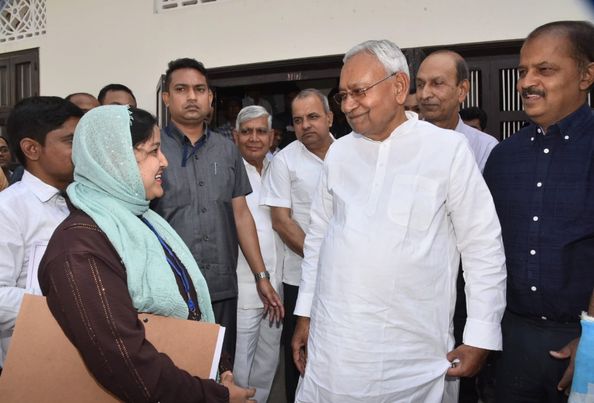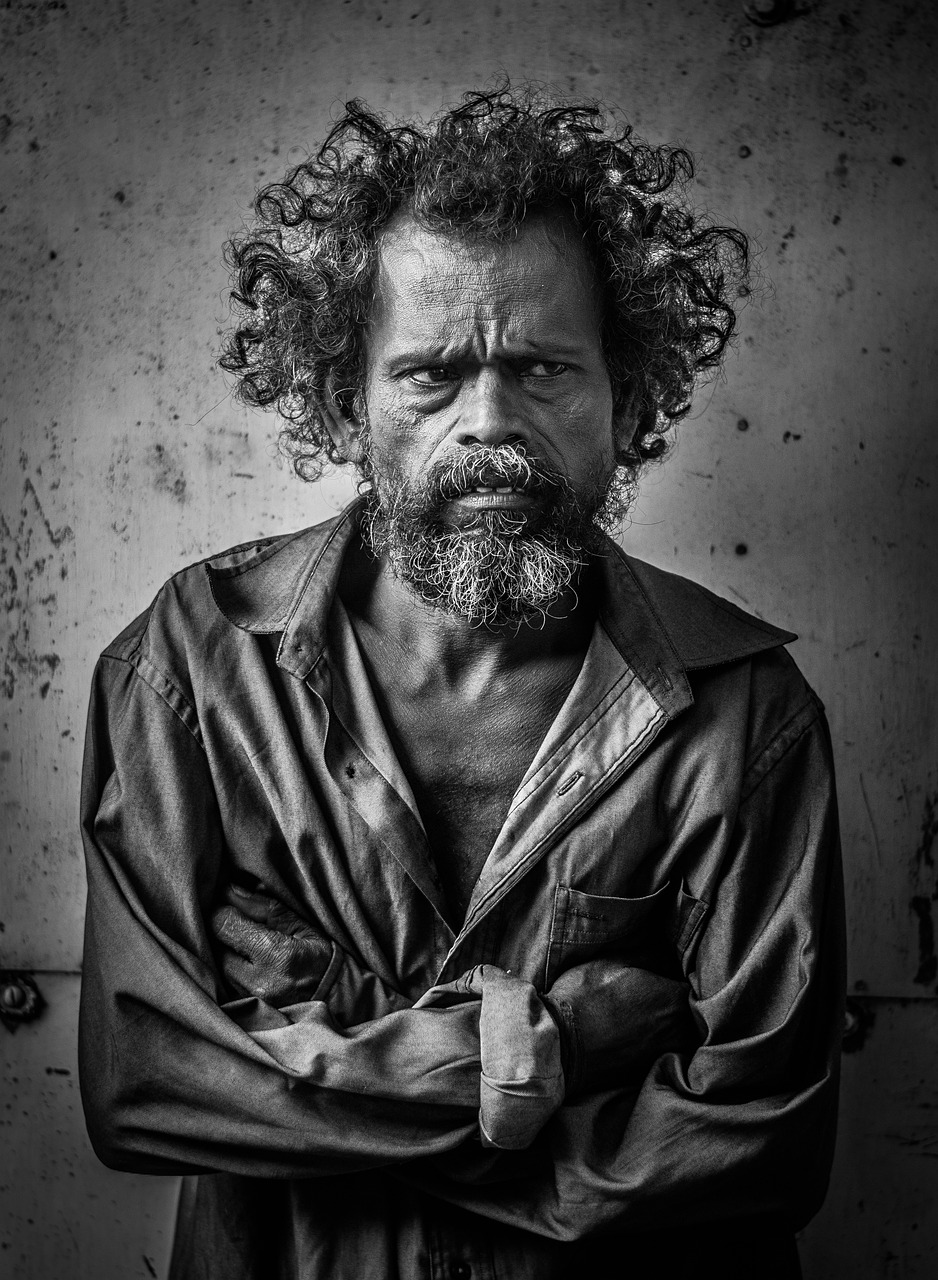Caste Census Politics in Bihar. Bihar has earned the distinction of being the pioneer in India to undertake and unveil the outcomes of a caste-centric survey, shedding light on the intricate demographic tapestry of the state’s populace. Commenced by the Nitish Kumar-led administration in January 2023, the survey has divulged that a significant 63 percent of the state’s inhabitants are affiliated with the Other Backward Classes (OBCs). In contrast, 15.52 percent belong to the general category, 19.65 percent to the Scheduled Castes (SCs), and 1.68 percent to the Scheduled Tribes (STs). Further granularity emerges from the survey, delineating various sub-castes within each category, featuring groups such as Yadavs, Kurmis, Bhumihars, Brahmins, and Musahars, among others.
Caste Census Politics in Bihar


The caste-driven survey has ignited a contentious discourse within Bihar’s political landscape, resonating even in the national political arena. This survey bears ramifications for the spheres of social justice, welfare policies, political representation, and electoral outcomes. Legal challenges were mounted against the survey’s constitutionality, contending that only the central government possessed the jurisdiction to conduct a comprehensive census. However, the Supreme Court’s decision to abstain from intervention and the Patna High Court’s validation of the survey’s legitimacy have cemented its authority.
Moreover, this survey has ignited a clamor for similar initiatives in other states, with Uttar Pradesh, set to go to the polls next year, standing as a prominent contender. Several political entities, including the Samajwadi Party (SP), Bahujan Samaj Party (BSP), Congress, and Apna Dal (Sonelal), have vigorously advocated for caste-based surveys in Uttar Pradesh and other regions. Their rationale underscores the empowerment of marginalized communities and the fostering of social harmony. Regrettably, the central government, led by the BJP, has thus far exhibited no inclination toward a nationwide caste-oriented census.
Caste Census Politics in Bihar
The findings of Bihar’s caste-centered survey also provide intriguing insights into the state’s sociopolitical landscape. Notably, it reveals that the Extremely Backward Classes (EBCs), constituting a formidable 36.01 percent of the state’s populace, stand as Bihar’s largest demographic bloc. Trailing closely are the OBCs, comprising 27.12 percent. The EBCs represent a heterogeneous amalgamation of castes positioned lower than the OBCs in terms of social status and economic prospects. Historically, the EBCs have constituted a pivotal vote bank for Nitish Kumar’s Janata Dal (United) (JDU), a party that has presided over Bihar’s governance since 2005 in various coalitions.
Furthermore, the survey exposes that the Yadavs, traditionally a politically dominant faction among the OBCs, comprise 14 percent of Bihar’s population. The Yadavs constitute the bedrock of support for Lalu Prasad Yadav’s Rashtriya Janata Dal (RJD), the principal opposition party in Bihar. The RJD has endorsed Tejashwi Yadav, Lalu’s son and deputy chief minister, as its prime ministerial aspirant for the 2024 elections.
The survey’s revelations extend to the demographic composition of Bihar’s upper-caste communities. Brahmins, conventionally regarded as influential within the upper echelons, represent a mere 3.66 percent of Bihar’s population. Bhumihars, another upper-caste faction active in Bihar’s political arena, account for 2.86 percent. Both Brahmins and Bhumihars have consistently aligned themselves with the BJP, which is presently in alliance with Nitish Kumar’s JDU.
Caste Census Politics in Bihar
Additionally, the survey elucidates the plight of Musahars, among the most marginalized and oppressed groups in Bihar, constituting 3 percent of the state’s inhabitants. Predominantly landless laborers, the Musahars endure discrimination and violence at the hands of upper-caste communities. The survey further highlights the presence of Kurmis, comparatively prosperous within the OBC framework, making up 2.87 percent of Bihar’s population. Notably, the Kurmis belong to Nitish Kumar’s own caste group and have remained steadfast supporters of his leadership.
In summary, Bihar’s caste-oriented survey offers an intricate mosaic of the state’s societal diversity and intricacy. It also provides an occasion for political parties to recalibrate their strategies and policies for the 2024 Lok Sabha elections. This survey could potentially influence ticket distribution, resource allocation, coalition formation, voter mobilization, and the framing of political agendas by various political entities.
Moreover, its impact transcends regional boundaries and could reverberate within national politics, given Bihar’s stature as a state contributing 40 MPs to the Parliament. The survey might catalyze discussions on caste-based reservations, social welfare initiatives, development metrics, and the pursuit of social justice on a pan-Indian scale. Additionally, it could galvanize other states to undertake similar endeavors or petition for a nationwide caste-centric census conducted by the central government.

In summation, Bihar’s caste-centered survey signifies a momentous development poised to reshape Bihar’s political landscape and potentially extend its influence beyond the state’s boundaries. It serves as a wellspring of insights into the social dynamics and aspirations of myriad castes and communities across India.
Political Realignment and Strategy (Caste Census Politics in Bihar)
The revelations from Bihar’s comprehensive caste-based survey are not just academic but have far-reaching implications for political parties and their electoral strategies. Parties will need to reassess their traditional vote-bank politics and consider the evolving demographics of the state.
The survey could potentially impact the distribution of electoral tickets. Parties may now need to field candidates from communities that have been historically marginalized but constitute a significant portion of the population. As a result, we may witness a more diverse pool of political candidates representing various castes and sub-castes.
Resource Allocation and Welfare Policies (Caste Census Politics in Bihar)
The survey findings also have implications for resource allocation and the design of welfare policies. Government schemes and programs will need to be more inclusive, ensuring that the benefits reach the deserving individuals from diverse backgrounds.
This shift in focus toward the EBCs, SCs, STs, and other marginalized communities may lead to targeted policies aimed at addressing their specific needs, such as education, employment, and healthcare. Political parties that align with the interests of these communities could gain electoral advantage.
Coalition Dynamics ( Caste Census Politics in Bihar )
In Bihar’s intricate political landscape, coalition politics has been the norm rather than the exception. The survey’s revelations may influence the formation of political alliances in the state. Parties will need to forge alliances that not only cater to their traditional vote banks but also reflect the changing demographics.
Moreover, the survey could serve as a catalyst for the realignment of political alliances. Parties may seek new partners to tap into the support base of different castes and sub-castes, leading to shifts in the traditional political equations.
Voter Mobilization
( Caste Census Politics in Bihar )
Understanding the caste composition of the electorate becomes crucial for political parties’ voter mobilization strategies. Parties will need to tailor their campaigns to resonate with the aspirations and concerns of specific caste groups.
Additionally, voter mobilization efforts may extend to previously neglected or underserved communities. Empowering these communities and encouraging their participation in the electoral process could shape the outcomes of future elections.
National Impact
( Caste Census Politics in Bihar )
As Bihar contributes a substantial number of Members of Parliament to the national legislature, the survey’s implications reach far beyond the state’s borders. The data collected could trigger a broader national discourse on issues related to caste-based reservations, social justice, and equitable development.
Political parties at the national level may need to reassess their strategies and policies in light of the caste dynamics revealed by the survey. It could influence their stances on key issues and their outreach to different communities across India.
Inspiring Similar Initiatives
( Caste Census Politics in Bihar )
Bihar’s pioneering caste-based survey could serve as an inspiration for other states to conduct similar exercises. States with diverse caste compositions may see value in understanding the demographics of their populations more comprehensively.
Furthermore, the survey could lead to demands for a nationwide caste-based census. This could become a focal point of discussion and debate at the national level, with various stakeholders advocating for or against such an initiative.
In conclusion, Bihar’s caste-based survey is not merely a statistical exercise but a game-changer in the realm of Indian politics. It has the potential to reshape electoral strategies, influence resource allocation, and spark discussions on social justice and equitable development. As Bihar sets an example, the nation watches closely, pondering the broader implications of this pioneering endeavor.
Frequently Asked Questions (FAQs)
(Caste Census Politics in Bihar)
1. What is Bihar’s caste-based survey?
Bihar’s caste-based survey is a comprehensive demographic study conducted by the state government to understand the caste composition of its population. It provides detailed data on the distribution of various castes and sub-castes within the state.
2. Why is Bihar’s caste-based survey significant?
This survey is significant because it sheds light on the intricate demographics of Bihar, revealing the proportions of different caste groups. It has implications for political representation, welfare policies, resource allocation, and electoral outcomes.
3. What are the key findings of the survey?
The survey indicates that 63 percent of Bihar’s population belongs to the Other Backward Classes (OBCs), while 15.52 percent belongs to the general category, 19.65 percent to the Scheduled Castes (SCs), and 1.68 percent to the Scheduled Tribes (STs). It also provides insights into the sub-castes within each category.
4. How does the survey impact politics in Bihar?
The survey’s findings are likely to influence political strategies, including the distribution of electoral tickets, resource allocation, coalition dynamics, and voter mobilization efforts. Parties may need to adapt to the changing demographics and cater to a more diverse electorate.
5. What are the implications for welfare policies?
The survey could lead to more targeted welfare policies aimed at addressing the specific needs of different caste groups. It may result in inclusive programs focusing on education, employment, and healthcare for marginalized communities.
6. How does Bihar’s survey impact national politics?
As Bihar sends a significant number of MPs to the national parliament, the survey’s revelations may influence the stances of political parties at the national level. It could trigger discussions on issues like caste-based reservations, social justice, and equitable development across India.
7. Could other states conduct similar surveys?
Yes, the success of Bihar’s survey could inspire other states with diverse caste compositions to conduct similar exercises. States may see value in understanding the demographics of their populations more comprehensively.
8. Is there a demand for a nationwide caste-based census?
There have been calls for a nationwide caste-based census from various quarters. However, the central government has not yet shown an inclination to conduct such a census. This issue remains a subject of debate and discussion in Indian politics.
9. How can political parties adapt to the changing caste dynamics?
Political parties may need to reassess their traditional vote-bank politics and forge alliances that reflect the evolving demographics. They may also need to tailor their campaigns to resonate with the aspirations and concerns of specific caste groups.
10. What are the broader implications of Bihar’s caste-based survey?
The survey’s broader implications include potential shifts in political alliances, the empowerment of marginalized communities, and a reevaluation of policies at both the state and national levels. It serves as a pioneering endeavor that could shape the future of Indian politics.